
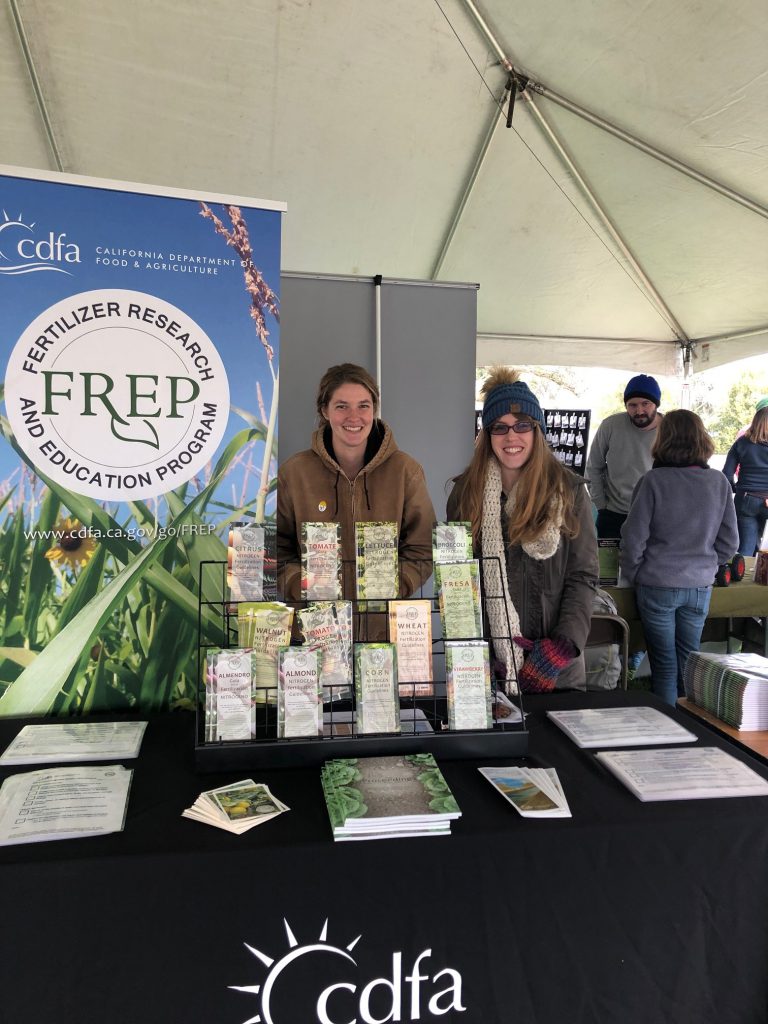




The California Department of Food and Agriculture is celebrating its 100th anniversary as a state agency in 2019. Throughout the year this blog will feature a number of items to commemorate this milestone.
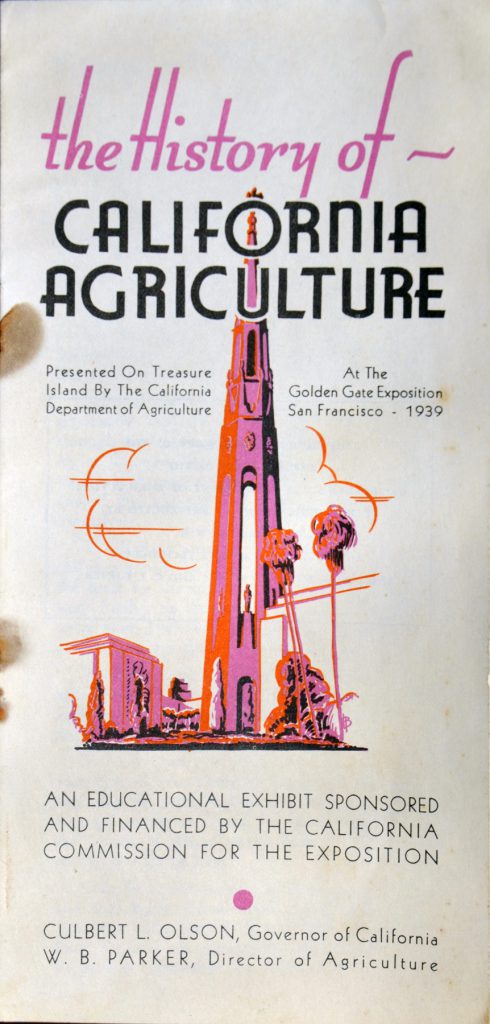
At the 1939 San Francisco World’s Fair, held at Treasure Island, CDFA (then the Department of Agriculture) presented an educational exhibit called, “The History of California Agriculture.” This booklet remains.
The reader is taken back to the time of explorer Juan Rodriguez Cabrillo, a native of Portugal in the service of Spain.
Cabrillo entered San Diego Bay in 1542 and was met by indigenous peoples telling him of maize and other foods that were abundant in fertile valleys.
The historical account quickly shifts to the 18th century and the mission period, which brought with it Spanish approaches to agriculture – specifically, grapes, cattle and sheep.
The first record of citrus plantings is referenced in 1782 at Monterey, and in 1804 what was believed to be California’s first mission orange grove was planted at Mission San Gabriel.
Also covered is the Gold Rush and a mention of how its waning period allowed for a flourishing of California agriculture that continued over the next roughly 80 years.
Other highlights:
“The state’s agriculture value (1939) exceeds $600,000,000 annually.” That figure today (2017) is more than $50 billion, #1 in the nation.
“Lettuce is sometimes called ‘green gold’ and goes to market from this state in nearly every month.” Lettuce is currently the sixth-ranked commodity by production value in California.
“The Division of Animal Industry renders great assistance to the state’s important poultry and egg industry through the operation of four poultry pathological laboratories.” The present day Division of Animal Health and Food Safety Services operates four labs in cooperation with UC Davis; in Davis, Turlock, Tulare and San Bernardino. These labs, known collectively as the California Animal Health and Food Safety Laboratory (CAHFS), is the backbone of California’s warning system to help protect the health of California’s livestock and poultry.
“One of the important functions is the administration of laws enacted to keep out insect pests and plant disease not now found in California, and to control and eradicate, if possible, those already here.” Those activities are still essential today and carried out by the Division of Plant Health and Pest Prevention Services.
“Much of the Department’s work in the field is accomplished through cooperation of the county agricultural commissioners and the sealers of weights and measures…The Department works closely at all times with other agencies engaged in service for agriculture, such as the University of California and the United States Department of Agriculture.” All of these relationships remain essential and strong today.
“Headquarters are in Sacramento. Branch offices are in San Francisco and Los Angeles.” Today CDFA has offices at more than 100 locations around the state.
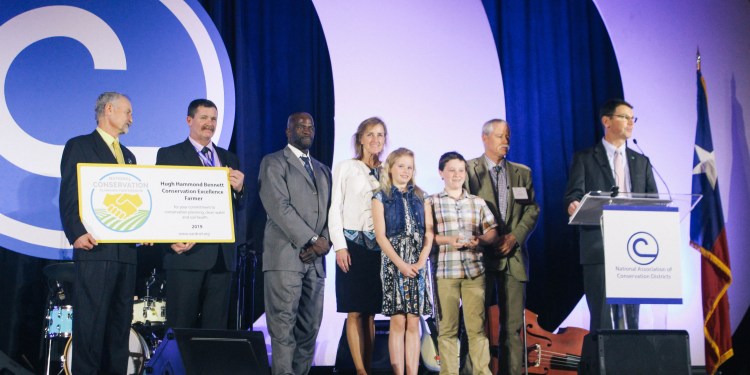
By Emma Johnson
Bruce and Rick Rominger of Rominger Farms (near Winters, Yolo County) had no idea they were even nominated for the national Hugh Hammond Bennett Award for Conservation Excellence. It came as a surprise when, a few weeks before the annual conference of the National Association of Conservation Districts (NACD), they received a call asking if they would be able to attend the meeting in San Antonio to accept their award.
Bruce says that, since he’s never been to San Antonio and he had the time to travel, he agree to make the trip. The conference was attended by nearly a thousand people from across the nation, all dedicated to conservation practices.
“We just consider it to be a great honor,” Bruce said. “Just to be among that group of people and to be singled out for that award is very humbling.”
The namesake of the award, Hugh Hammond Bennett, founded the Soil Conservation Service (which would later become the National Resources Conservation Service) in 1933. Bennett was known as the “Father of Soil Conservation.” According to the NACD’s website, the purpose of the Hugh Hammond Bennett Award for Conservation Excellence is to, “recognize those who are dedicated to conservation planning and implementation.”
In a press release sent to the Express, the NACD stated that Rominger Farms was recognized for their, “innovative conservation efforts” on their 6,500 acres of agricultural land outside of Winters. The NACD commended them on their commitment to improving soil health and efficient water use.
“Managing that many acres in an environmentally-sustainable way while maintaining productivity takes a commitment to long-term conservation planning, which makes Bruce and Rick worthy recipients of this prestigious award,” the press release reads.
For the Rominger brothers, sustainability isn’t an end-point, it’s a constant process of growth and learning.
“We are to be more environmentally sustainable all the time,” Bruce says. Currently Rominger Farms operations support a diverse array of crops, including tomatoes, wine grapes, rice, wheat, corn, safflower, alfalfa and oat hay. They have arranged tours for universities and government organizations to visit their operation and learn about their practices.
“It’s not because we have the answers,” Bruce is quick to point out. “It’s because I like the dialogue.” He says that they are always in the process of learning how to implement best practices in an economically viable way.
Discussing modern conservation farming practices, Bruce accounts for the immediate needs of farmers while simultaneously taking the long view. As he puts it, the two aren’t necessarily at odds.
The farmer’s first priority has to be staying in business, Bruce says. He points out that if he can’t make a living farming he will be replaced, and that the next person to own the land might not be dedicated to conservation.
But the necessity to make a profit is tempered by Bruce’s philosophy that people should be farming his lands 50, 100 even 500 years from now. He points to areas of Egypt and China that have been farmed successfully for thousands of years, while soil in the Central Valley has become depleted in under 200. Bruce believes that it is farmers’ responsibility to find out what it will take to make that happen.
“I’m not saying we’re there,” Bruce explained. “I’m saying we’re trying.”
One of the ways they are trying to reach the level of sustainability that will preserve the land for future generations is to apply traditional solutions to modern problems. As fifth generation farmers, Bruce and Rick can look to their own family history for methods of sustainable farming.
Bruce said that, before fertilizers were readily available for purchase, farmers like his grandfather would sow his fields with legumes between seasons. Legumes pull nitrogen, a necessary element for many of plants’ metabolic processes, from the air, where it is abundant, down into the soil. This process naturally fertilized the soil for the next crop.
The invention of synthetic fertilizers has changed the nature of farming, in some ways for the better, Rick says. It would not be possible to meet the needs of the global food demands without synthetic nitrogen fertilizer. Still, Bruce says, farmers are going to have to relearn some of the old ways to remain sustainable.
One method that the Romingers brothers are currently using is the implementation of cover crops. Because their fields can’t produce a valuable crop over the winter season, the Romingers plant a cover crop between the fall harvest and the spring planting. In the past these cover crops have included triticale (a cross between wheat and rye), legumes and mustard. These crops improve the soil by increasing water retention, decreasing erosion and raising the level of organic matter in the soil.
Organic matter is simply defined as everything in the soil that isn’t a mineral. This can include decaying plant and animal matter. It is mostly made of carbon, much like the plants and animals it comes from.
Increasing the levels of carbon in the soil not only improves the quality of the soil, but has also been discussed as a way to reduce the amount of carbon in our atmosphere. This carbon transfer occurs through the process of photosynthesis. Plants take in carbon dioxide, and, through the process of converting the CO2 into carbohydrates, keeps some carbon in its structures. This carbon is then transferred through the plant into the soil.
If the carbon levels in the soil rise, the land can become a CO2 sink, meaning a reservoir for carbon.
Bruce says that while this method might be a useful method of combating the rising carbon levels in the atmosphere, it is not a viable option for all farmers. Even though it is a good practice for soil health, it can cause farmers other problems.
The reality is that this is something that is really difficult to accomplish, Bruce says.
For one thing, the cover crop has to be removed before the next crop goes in. Currently Bruce is looking at a cover crop that needs to be out in four weeks so that he can plant tomatoes, but which is in a field that is too muddy to till.
But these are difficulties that the Rominger brothers are committed to continuing to tackle. Bruce says that while some of these practices might bring up hardships, others have actually proven to be more economical than non-sustainable farming practices.
Bruce also points out that his family is living on the land that they farm. As he puts it, they like to see wildlife on their property, and if they can support the natural ecosystem along with their commercial farm, it is a benefit to all.
“Rich and Bruce are truly conservation leaders in the 21st Century,” the statement from the NACD reads. “They are good stewards of the land, eager to share their knowledge and experiences with others, willing to take risks with new and innovative technologies, informed and engaged about issues facing agriculture, and most of all, they are taking steps now to plan wisely for the next generation.“
By Pamela Kan Rice
Farmers know they lose crops to pests and plant diseases, but scientists have found that on a global scale, pathogens and pests are reducing crop yields for five major food crops by 10 percent to 40 percent, according to a report by a UC Agriculture and Natural Resources scientist and other members of the International Society for Plant Pathology. Wheat, rice, maize, soybean, and potato yields are reduced by pathogens and animal pests, including insects, scientists found in a global survey of crop health experts.
At a global scale, pathogens and pests are causing wheat losses of 10 percent to 28 percent, rice losses of 25 percent to 41 percent, maize losses of 20 percent to 41 percent, potato losses of 8 percent to 21 percent, and soybean losses of 11 percent to 32 percent, according to the study, published in the journal Nature, Ecology & Evolution.
Viruses and viroids, bacteria, fungi and oomycetes, nematodes, arthropods, molluscs, vertebrates, and parasitic plants are among the factors working against farmers.
Food loss
“We are losing a significant amount of food on a global scale to pests and diseases at a time when we must increase food production to feed a growing population,” said co-author Neil McRoberts, co-leader of UC ANR’s Sustainable Food Systems Strategic Initiative and Agricultural Experiment Station researcher and professor in the Department of Plant Pathology at UC Davis.
While plant diseases and pests are widely considered an important cause of crop losses, and sometimes a threat to the food supply, precise figures on these crop losses are difficult to produce.
“One reason is because pathogens and pests have co-evolved with crops over millennia in the human-made agricultural systems,” write the authors on the study’s website, globalcrophealth.org. “As a result, their effects in agriculture are very hard to disentangle from the complex web of interactions within cropping systems. Also, the sheer number and diversity of plant diseases and pests makes quantification of losses on an individual pathogen or pest basis, for each of the many cultivated crops, a daunting task.”
“We conducted a global survey of crop protection experts on the impacts of pests and plant diseases on the yields of five of the world’s most important carbohydrate staple crops and are reporting the results,” McRoberts said. “This is a major achievement and a real step forward in being able to accurately assess the impact of pests and plant diseases on crop production.”
The researchers surveyed several thousand crop health experts on five major food crops – wheat, rice, maize, soybean, and potato – in 67 countries.
“We chose these five crops since together they provide about 50 percent of the global human calorie intake,” the authors wrote on the website.
The 67 countries grow 84 percent of the global production of wheat, rice, maize, soybean and potato.
Top pests and diseases
The study identified 137 individual pathogens and pests that attack the crops, with very large variation in the amount of crop loss they caused.
For wheat, leaf rust, Fusarium head blight/scab, tritici blotch, stripe rust, spot blotch, tan spot, aphids, and powdery mildew caused losses higher than 1 percent globally.
In rice, sheath blight, stem borers, blast, brown spot, bacterial blight, leaf folder, and brown plant hopper did the most damage.
In maize, Fusarium and Gibberella stalk rots, fall armyworm, northern leaf blight, Fusarium and Gibberella ear rots, anthracnose stalk rot and southern rust caused the most loss globally.
In potatoes, late blight, brown rot, early blight, and cyst nematode did the most harm.
In soybeans, cyst nematode, white mold, soybean rust, Cercospora leaf blight, brown spot, charcoal rot, and root knot nematodes caused global losses higher than 1 percent.
Food-security “hotspots”
The study estimates the losses to individual plant diseases and pests for these crops globally, as well as in several global food-security “hotspots.” These hotspots are critical sources in the global food system: Northwest Europe, the plains of the U.S. Midwest and Southern Canada, Southern Brazil and Argentina, the Indo-Gangetic Plains of South Asia, the plains of China, Southeast Asia, and sub-Saharan Africa.
“Our results highlight differences in impacts among crop pathogens and pests and among food security hotspots,” McRoberts said. “But we also show that the highest losses appear associated with food-deficit regions with fast-growing populations, and frequently with emerging or re-emerging pests and diseases.”
“For chronic pathogens and pests, we need to redouble our efforts to deliver more efficient and sustainable management tools, such as resistant varieties,” McRoberts said. “For emerging or re-emerging pathogens and pests, urgent action is needed to contain them and generate longer term solutions.”
The website globalcrophealth.org features maps showing how many people responded to the survey across different regions of the world.
In addition to McRoberts, the research team included lead author Serge Savary, chair of the ISPP Committee on Crop Loss; epidemiologists Paul Esker at Pennsylvania State University and Sarah Pethybridge at Cornell University; Laetitia Willocquet at the French National Institute for Agricultural Research in Toulouse, France; and Andy Nelson at the University of Twente in The Netherlands.

CDFA, the California Association of Food Banks, and Sacramento Food Bank and Family Services teamed-up again in 2018 to sponsor the State Employee Food Drive. The generosity of state employees throughout California, including donations at office bins as well as cash donations, resulted in 609,527 pounds of food–more than 300 tons–available for distribution through food banks. This total includes 4,273 turkeys donated by state employees for holiday meals.
In this video, CDFA secretary Karen Ross, who chaired the Food Drive, joins Sacramento Food Bank CEO Blake Young and Food Drive coordinator Peggy Marshall to say thank you.
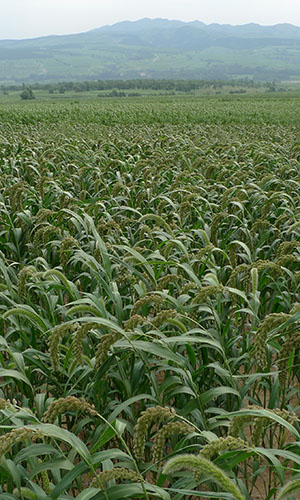
By Gerry Everding
Since the beginning of archaeology, researchers have combed the globe searching for evidence of the first domesticated crops. Painstakingly extracting charred bits of barley, wheat, millet and rice from the remains of ancient hearths and campfires, they’ve published studies contending that a particular region or country was among the first to bring some ancient grain into cultivation.
Now, an international team of scientists, led by Xinyi Liu of Washington University in St. Louis, has consolidated findings from hundreds of these studies to plot a detailed map of how ancient cereal crops spread from isolated pockets of first cultivation to become dietary staples in civilizations across the Old World.
“The very fact that the ‘food globalization’ in prehistory spanned more than three thousand years indicates perhaps a major driver of the process was the perpetual needs of the poor rather than more ephemeral cultural choices of the powerful in the Neolithic and Bronze Age,” said Liu, assistant professor of anthropology in Arts & Sciences.
The study illustrates the current scientific consensus on the prehistoric food globalization process that transformed diets across Eurasia and Northern Africa between 7,000 and 3,500 years ago.
Full article: “Prehistoric food globalization spanned three millennia” from Washington University
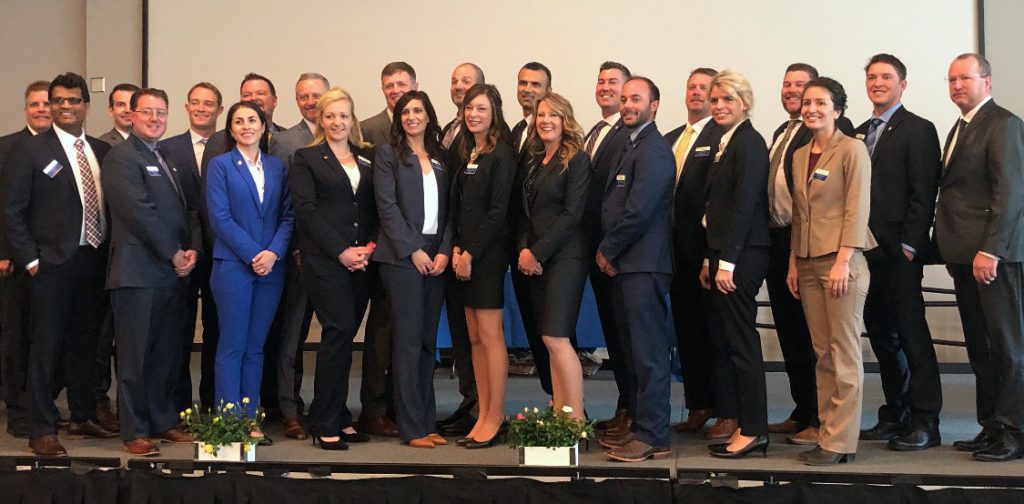

The California Department of Food and Agriculture is celebrating its 100th anniversary as a state agency in 2019. Throughout the year this blog will feature a number of items to commemorate this milestone.

CDFA operates 16 Border Protection Stations today as a first line of defense against invasive species posing a risk to California’s food supply and environment, as described in this piece from the Growing California video series.

Young and emerging leaders participating in the Coro Fellows Program are in Sacramento this week to learn what they can, both personally and professionally, about a wide range of public policy areas, including agriculture and its important role in California.
A dozen fellows met with California Agriculture Secretary Karen Ross at the State Capitol yesterday afternoon for a discussion that ranged from labor and mechanization on farms to climate change, marketing, broadband and cannabis. Today, they continue their exploration of public policy by shadowing legislators.
The Coro Fellows Program develops leaders to work and lead across different sectors by equipping them with knowledge, skills, and networks to accelerate positive change. The fellowship is a nine-month program, with fellows participating in a series of full-time public affairs projects.

The 2019 World Ag Expo is scheduled for this week in Tulare (today-Thursday), and several divisions at CDFA will be participating.
The California Citrus Pest and Disease Prevention Program will staff a booth to provide information about the Asian citrus psyllid, huanglongbing and other issues important to the citrus industry.
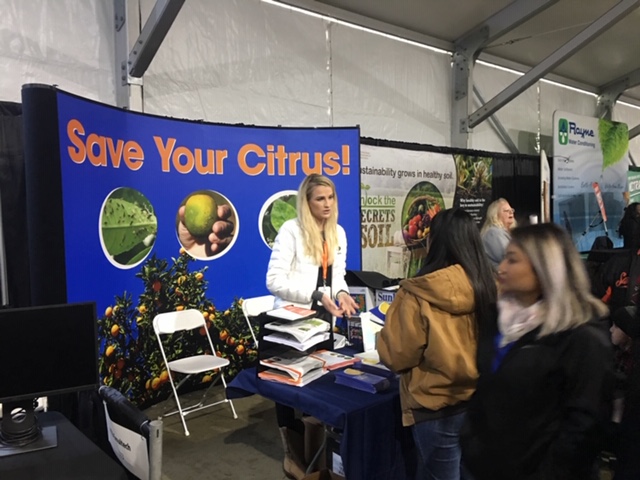
CDFA collaborates with citrus growers on the program. Additionally, this booth will also provide information CDFA’s Office of Environmental Farming Initiatives, which offers grant programs like SWEEP (water efficiency), DDRDP (dairy digesters), AMMP (alternative manure management), and the Healthy Soils Program. This booth can be found at Pavilion A&B, #1514.
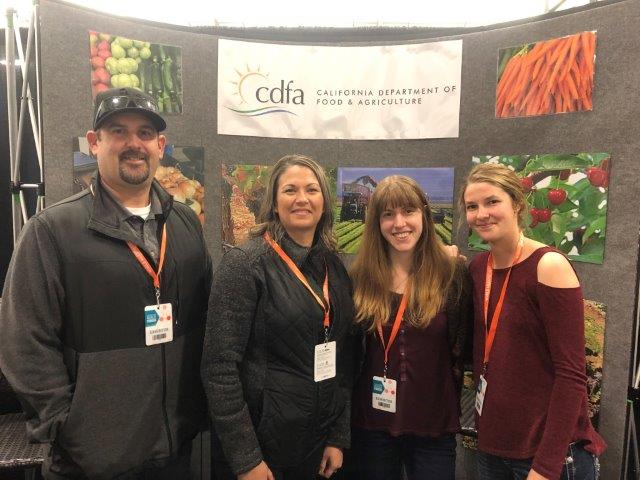
CDFA’s Inspection Services division will staff another booth to provide information about certified farmers’ markets, the State Organic Program, the Food Safety and Modernization Act Produce Safety Rule, and and feed and fertilizer regulations. This booth is in Building C, #3801.
This will be the 52nd annual World Ag Expo. There will be more than 1,500 exhibitors displaying cutting-edge agricultural technology and equipment across 2.6 million square feet of exhibit space.